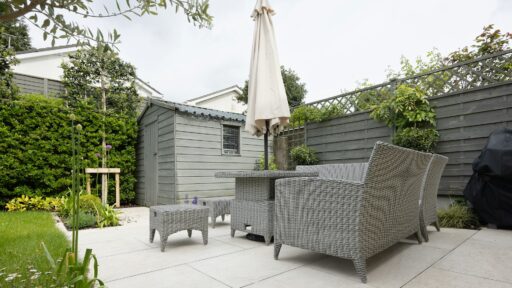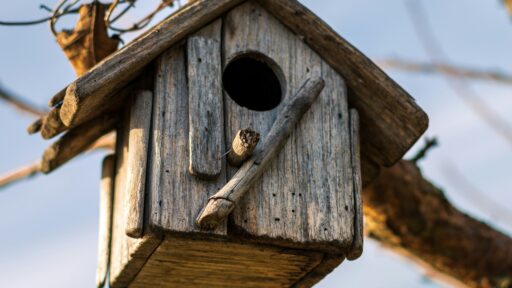Prefab shower niches combine convenience with clean design, offering a ready-made solution for adding storage space to your bathroom walls. They eliminate much of the complexity and labor that comes with building a niche from scratch, making them a popular choice for both homeowners and contractors.
But while these units are designed to be straightforward, they’re not foolproof. A rushed or careless install can lead to leaks, awkward tile cuts, or a niche that doesn’t sit flush with the wall. To get a seamless, finished look that lasts, a few critical steps must be followed during installation.
Read on to learn how to install a prefab shower niche with precision and avoid common mistakes.
1. Choose the Right Niche Size and Placement
Where and how you install your prefab shower niche affects both appearance and function. Choosing the right size and position upfront avoids rework, awkward tile cuts, and storage limitations down the line.
To help guide your selection and layout, focus on these key considerations:
Fit the niche within existing wall framing: Most shower niches are designed to slot between standard 16-inch stud spacing, but it’s still important to confirm actual stud locations before purchasing. If you’re working with a tile ready or redi niche unit, make sure the cavity is deep enough to accommodate the full depth of the product. This step can prevent unnecessary wall adjustments later.
Coordinate with your tile layout: Poor placement can throw off your tile grid, forcing uneven cuts or disrupting the visual balance of your shower wall. Plan your niche so its edges align cleanly with full tiles when possible. For design inspiration, it helps to explore layout visuals. Visiting a resource that features shower niche ideas can give you practical examples of how size, symmetry, and tile choice work together. These references are especially useful when coordinating multiple elements in a modern bathroom design.
Choose a height that fits how you use your shower: If you’re installing a single shower shelf niche for shampoo bottles, position it around chest height or slightly above for easy reach. If it’s a double shower shelf or quadruple shower shelf, place it so all tiers are usable without bending or stretching awkwardly. Avoid placing niches too close to the floor or directly beneath a shower head, where constant water exposure can lead to faster wear.
Thoughtful planning here makes your prefab shower niche feel like an intentional part of the space rather than an afterthought.
2. Ensure Proper Waterproofing
Even the most well-built prefabricated shower niche can cause long-term issues if it’s not properly sealed. Waterproofing isn’t just a technical step—it’s the layer of protection that shields your walls from rot, swelling, and mold growth.
The following are areas to focus on when waterproofing your niche installation:
Install over a moisture-resistant backer board: Always install your niche against cement board or a similar water-resistant backer. Drywall and green board can absorb moisture and fail over time. This matters whether you’re using recessed shower shelves or a black stainless steel unit.
Reinforce seams with membrane or sealing tape: Where the niche meets the wall, apply a waterproofing membrane or fabric tape made for wet zones. This protects seams, even if your shower niche model includes flange edges. Reinforcement helps keep water out where materials meet.
Seal all fasteners and joints thoroughly: Every screw, joint, and edge needs waterproof sealant before tiling. Even space-saving storage setups like a simple shelf require this step. A quick inspection after sealing helps ensure your bathroom storage solution is watertight.
Missing or rushing these steps can lead to costly repairs hidden behind your tile. Proper waterproofing ensures your shower niche shelf lasts as long as your tile does—and keeps the recess shower walls safe underneath.
3. Test Fit Before Final Installation
Before you make any cuts or apply adhesive, it’s essential to check how the prefab niche fits inside the wall. A dry run lets you spot any misalignments or unexpected gaps that might affect the finish. This step helps you avoid mid-installation surprises that can throw off your progress.
During the test fit, check how the niche sits in relation to nearby materials and framing. It should lie flush with no tilting or overhang, especially for rigid or deep shower niche models. The same applies to a shower corner shelf, which must fit cleanly without disrupting tile layout or nearby fixtures. If your niche has features like black stainless steel trim, confirm there’s enough clearance to avoid clashes with tiles or studs.
If the opening feels tight or uneven, you may need to make small framing adjustments before installation. Shaving off excess material or reinforcing an edge can go a long way in ensuring a clean result. For space-saving storage designs or deeper recessed shower shelves, this step also helps confirm the back won’t hit plumbing or insulation layers.
4. Integrate with Your Tiling Plan
Before cutting your first tile, assess how the niche interacts with the broader layout of your shower walls. Visual consistency across tile lines helps maintain balance, especially when the niche sits in a prominent location. Shifting a layout slightly can preserve symmetry and reduce the need for narrow filler tiles around the niche.
Once you finalize your tile layout, look closely at the tile types surrounding the niche. Using smaller tiles or mosaics around corners and edges makes it easier to maintain even spacing and avoid awkward cuts.
To finish the look, consider how color or pattern shifts at the niche opening. Subtle tile variations within or around the niche can either create contrast or keep things uniform, depending on your design goals.
Final Thoughts
Prefab shower niches simplify installation, but you still need careful planning to get them right. From choosing the right size to aligning the tile, each step contributes to a professional, watertight finish. Follow these four tips, and your niche will look great, perform well, and last for years.








